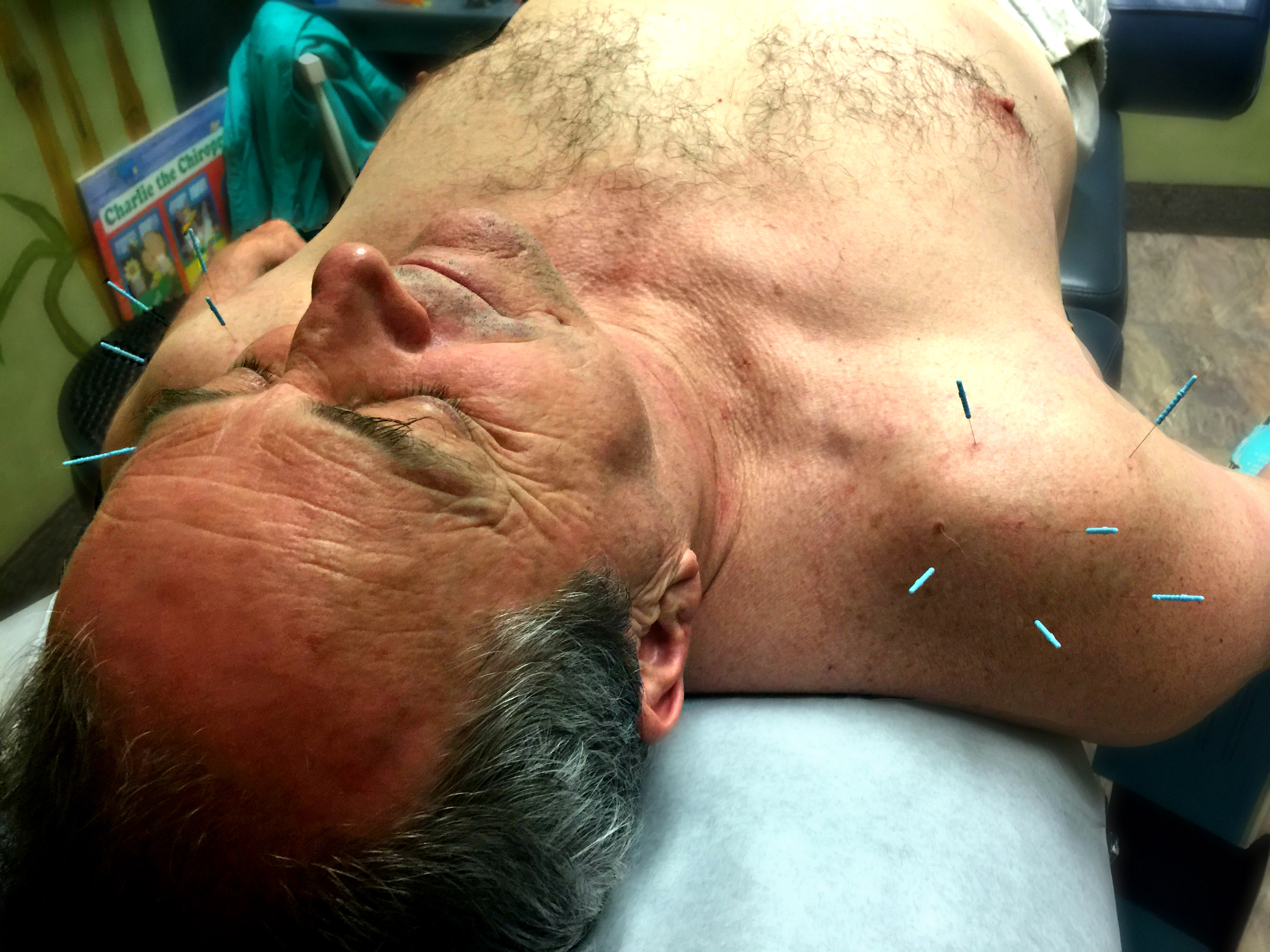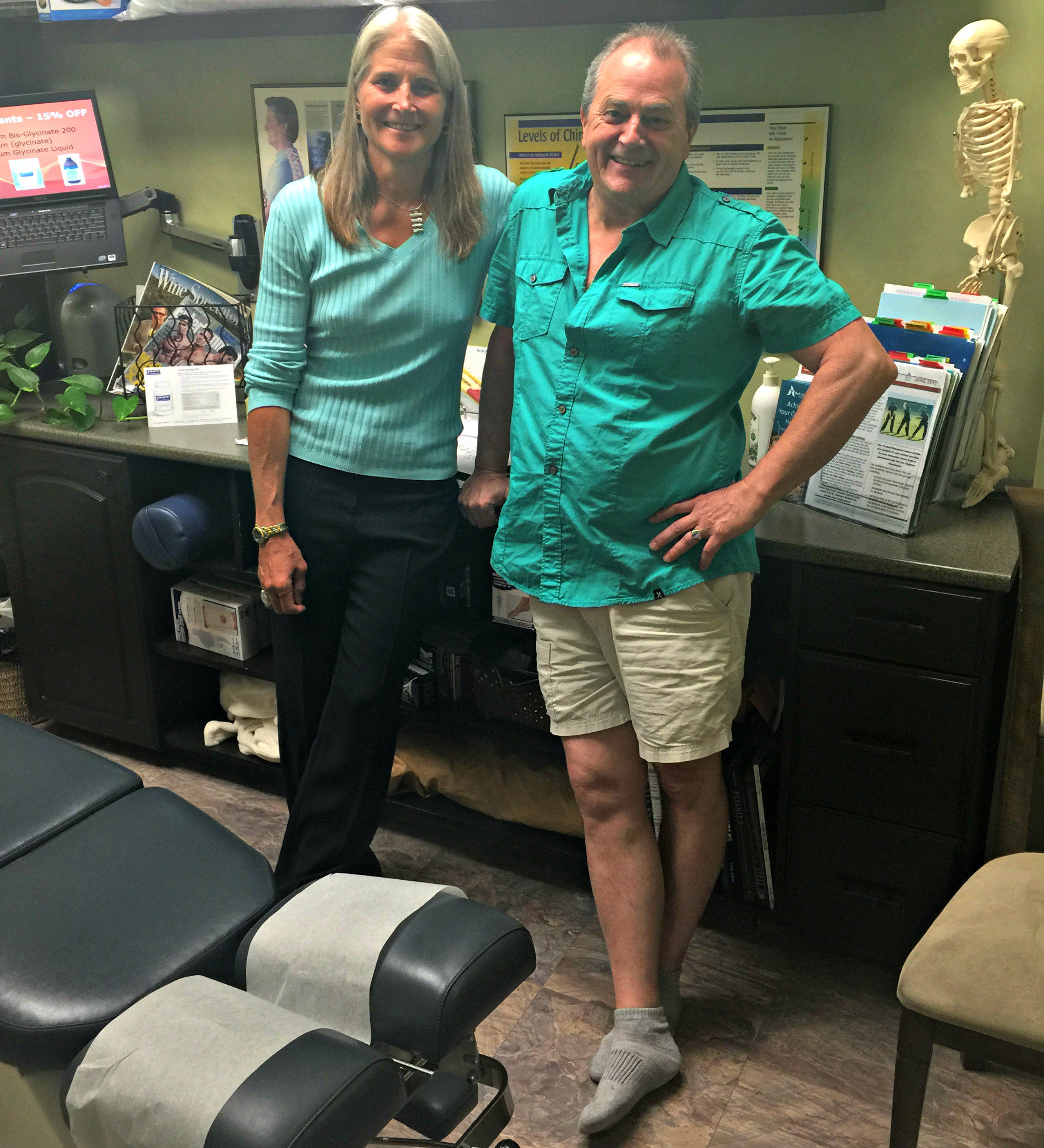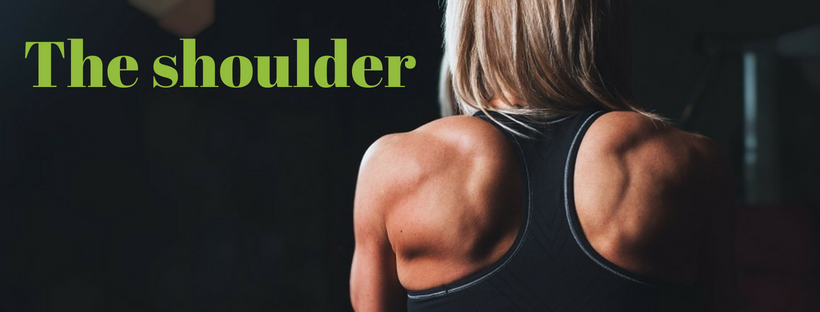Shoulder Anatomy
The shoulder joint consists of the round head of the upper arm connecting to the flat surface of the shoulder blade. This “round-on flat” relationship is different from most other joints in the body, and as a result is capable of providing a great deal of movement. For example, most joints allow only one direction of movement (i.e. ankle, knee, elbow, fingers). In comparison, the architecture of the shoulder allows us to reach up overhead, back behind the body, across the chest, and into internal and external rotation.
Whether throwing a ball, paddling a canoe, lifting boxes, or pushing a lawn mower, we rely heavily on our shoulders to perform a number of activities. The shoulder can move in 3 planes of motion, making it the most mobile joint in the body. Because of this flexibility, however, it is not very stable and is easily injured. The shoulder is made up of two main bones: the end of upper arm bone (humerus) and the shoulder blade (scapula). The end of the humerus is round, and it fits into a socket in the scapula. The scapula extends around the shoulder joint to form the roof of the shoulder, and this joins with the collar bone (clavicle). Ligaments connect the bones of the shoulder, and tendons connect the bones to surrounding muscle. Ligaments and muscles keep the humerus from slipping out of the socket and keep the clavicle attached to the scapula.
Four muscles begin at the scapula and go around the shoulder, where their tendons fuse to form the rotator cuff. These muscles are called the supraspinatus, infraspinatus, subscapularis, and teres minor and they help to stabilize the joint along with the “Scapular Stabilizers”. When the shoulder moves, the end of the humerus moves in the socket. A very small surface of the bones touch each other.
3 Bones, 3 Joints which attach it to the neck, mid back, elbow, arm and hand, 5 Ligaments, over 30 Muscles, 4 Bursa, 3 capsules.
75% of North Americans will experience shoulder problems requiring care at some point.
To keep shoulders healthy and pain-free, it’s important to know how to spot and avoid common injuries.
Motions Explained
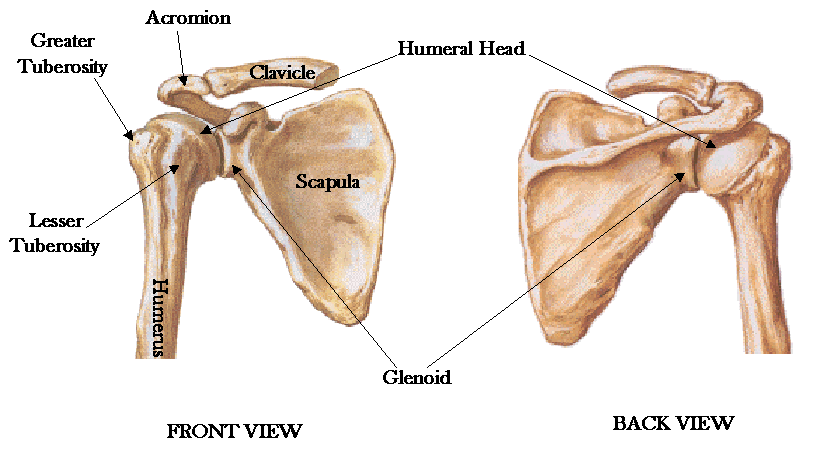
Normal movement of this complicated joint requires fluent action at four different joints and these often are out of alignment with shoulder problems:
• Scapulo-thoracic Joint: Movement of the scapula (shoulder blade), gliding on the rib cage and with the thoracic spine (mid-back).
Normal motion is: for every 2/3 of glenohumeral elevation (shoulder), there is 1/3 of scapulo-thoracic (mid-back with shoulder blade) elevation. Movements occurring here include elevation/depression {up/down}, retraction/protraction {squeezing shoulder blades together or apart} and internal/external rotation {rotating shoulder socket in and out}.
When someone experiences a shoulder injury their body adapts and switches the mechanics to 1/3 shoulder motion and 2/3 mid-back-shoulder blade motion. Commonly this movement is not fixed completely for patients that have shoulder problems and this is the main reason why their problem does not go away. The thoracic spine (mid back) needs to be treated as well to aid in resolving their shoulder issues.
• Acromio-clavicular Joint: Movement about this joint is very slight – but this synovial joint actually allows small amounts of superior and inferior glide {up and down motion} and rotational motions. When this goes out of alignment there can be discomfort or pain in the front of the shoulder.
• Sterno-clavicular Joint: This refers to the joint of the acromion at the manubrium {breast bone} of the sternum. Movements allowed here include elevation/depression, anterior/posterior {front to back motion} translation and small amounts of rotation. Problems in this area can lead to discomfort/pain in the front or the upper back area.
• Gleno-humeral Joint: Movement of the head of the humerus in the glenoid fossa. Problems with this joint can lead to muscle imbalances and tightness in the muscles in the shoulder.
It is VERY important with shoulder problems to evaluate the motion of all four of these joints to aid in resolving the problem.
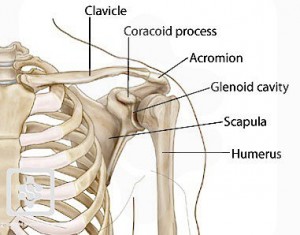
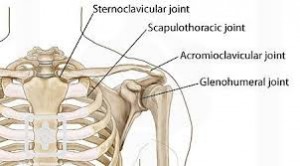
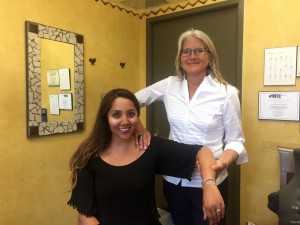
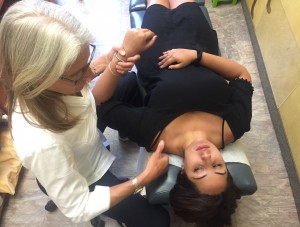
Pictured above, Dr. Barbara Rodwin performs Active Release Technique on a patient to help relieve her pain.
Do you have pain in one or both of your shoulders?
Check out our article about the signs that you should get treatment, different shoulder injuries that we see at Back to Health and how we treat them.
Read our patient’s testimonial below about how Dr. Rodwin has been able to help him:
Pictured above is one of Back to Health’s patients: Heron Wolck. Heron has treatment for his shoulders, low back, and hip. He has been doing very well, and is happy to be back to all the activities he wants to do. He can now lift with no pain! His treatment includes combined chiropractic, acupuncture, and ART on his shoulders. Hard to believe that he could barely move his right shoulder when he came in, now he has full mobility!
“Finding someone like Dr. Rodwin is a bit different for everyone. I chose to put my faith in Dr. Rodwin based on a personal reference that was made, that showed she cared about people. When a doctor takes a genuine personal interest in a patient, that’s what I like. After all, we expect our “caregivers” to “give a care” about us and make us feel better. We develop relationships with our care givers over time, and I’ve found a type of trust in Dr. Rodwin that I really enjoy and I am relieved to have found. I have complete confidence in how my discomforts are treated and managed. Dr. Rodwin, Barbara, has been friendly, reassuring, professional, and my issues have been addressed very effectively! It’s only good sense to look after our aches and pains as a form of maintenance, but the truth is that I also enjoy and look forward to my appointments. The staff Dr. Rodwin has assembled, all seem to work together so harmoniously, and everyone just seems so positive, it’s a little like visiting a very happy family. I’ve always been treated so very well, and I only have good things to say about the people I have met here. I consider time spent with them, to be good for me! Regards, Heron.”
You can find out more about how our clinic has helped others on our ‘patient stories’ page.
